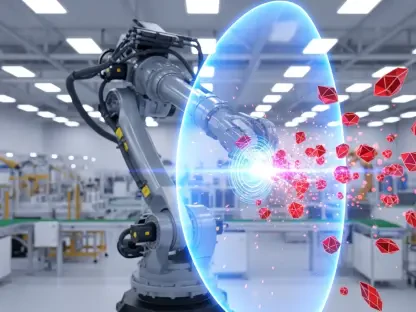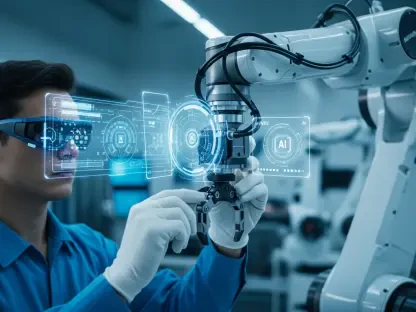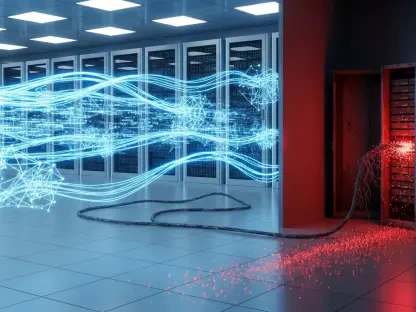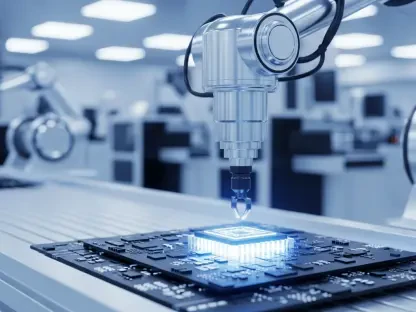Kwame Zaire, a pioneer in the field of manufacturing with a keen interest in electronics and equipment, has dedicated significant efforts toward enhancing production management through predictive maintenance, quality assurance, and safety strategies. In this engaging interview, Zaire delves into the pressing issue of cybersecurity within U.S. manufacturing — a sector increasingly threatened by cyberattacks — and underscores the importance of cultivating a cybersecurity-first culture. He articulates the need to shift cybersecurity from a mere cost center to a value center, explores the real-world impacts of OT breaches, and shares insights into fostering a cyber-aware workforce. His insights touch upon how leaders can signal cybersecurity’s importance and the role of senior executives in championing these initiatives.
Why is the U.S. manufacturing sector a top target for cyberattacks, more so than healthcare, financial, or government institutions?
Manufacturing is the cornerstone of economic vitality and national security. It encompasses our facilities, supply chains, and energy grids, which are critical infrastructures. This makes the sector an attractive target for cyberattacks, especially from nation-state actors looking to disrupt production capabilities and gain economic advantage. Unlike other sectors, manufacturing directly impacts how our economy functions and how our national security is maintained.
What are the key sources of cyber threats facing the manufacturing industry?
Threats in the manufacturing sector are multifaceted, stemming from sources such as disgruntled employees, corporate competitors, and criminals seeking financial gains through ransom. However, the most significant threats arise from nation-state actors. These entities target manufacturing to cripple operations and tilt the economic scales by gaining access to valuable production insights and capabilities.
How has the increasing digitization and automation of manufacturing facilities impacted their vulnerability to cyberattacks?
The integration of digital, robotic, and automated systems within manufacturing has exponentially increased the sector’s vulnerability to cyberattacks. As operations become interconnected online, they become more susceptible. With every new digital tool or automation process introduced, the potential entry points for cyber threats multiply, which demands a heightened focus on cybersecurity measures that are embedded into these technologies from day one.
What does it mean to shift cybersecurity from a “cost center” to a “value center” in the manufacturing sector?
Traditionally, cybersecurity has been viewed as a necessary expense — a cost that companies endure to prevent attacks. However, transforming this outlook to view cybersecurity as a value center means recognizing its integral role in driving innovation and operational resilience. This shift demands a collaborative effort across IT and OT teams, with cybersecurity considerations being a fundamental aspect of new operations and technologies, allowing for secure and innovative growth.
Why is IT cybersecurity considered necessary but insufficient in protecting manufacturing operations?
IT cybersecurity addresses risks related to information systems, but manufacturing operations primarily rely on OT environments, which run the production lines and infrastructure. The most damaging attacks exploit vulnerabilities specifically in these OT systems. Thus, while IT measures provide a level of defense, comprehensive protection requires addressing the unique challenges posed by OT systems and ensuring they are secure by default.
Can you explain how OT (Operational Technology) breaches can have real-world consequences?
OT breaches can result in far-reaching consequences, such as damaged equipment and production halts, potentially culminating in catastrophic physical disasters. These systems control the critical infrastructure, and breaches therein can disrupt not just operations but also compromise safety, resulting in significant financial and reputational damages.
How can manufacturing leaders foster a cyber-aware workforce?
Cultivating a cyber-aware workforce involves embedding cybersecurity into every level of the organization. Leaders can drive awareness through ongoing training programs, simulations, and communication that emphasizes cybersecurity’s role in operational excellence. It’s about making cybersecurity an integral part of each employee’s routine and mindset, encouraging proactive rather than reactive engagement with security protocols.
What does it mean to have a cybersecurity culture in an organization?
A cybersecurity culture signifies that cybersecurity is ingrained within the organizational ethos, where every employee understands its importance and their role in maintaining it. Such a culture is proactive, with systems built securely from the outset, and it requires continuous reinforcement from leadership and through company policies, ensuring that cybersecurity is viewed as essential to the organization’s mission and success.
How can senior leadership in manufacturing signal the importance of cybersecurity to their workforce?
Leadership can signal cybersecurity’s importance by championing it openly and consistently as a business enabler and value creator, beyond merely a protective mechanism. This involves integrating cybersecurity discussions into strategic planning, innovation projects, and regular meetings, as well as sharing successes and challenges openly to ensure all employees understand its centrality to the company’s resilience and growth.
Can you describe the structure of cyber threats, from hygiene attacks to sabotage-level threats?
Cyber threats generally fall into a hierarchical structure. At the base are hygiene attacks, such as phishing and credential theft, which are relatively simple yet can be dangerous. Moving up the pyramid are advanced persistent threats (APTs), characterized by sophisticated techniques used to infiltrate systems and steal data. At the peak are sabotage-level threats capable of widespread damage, targeting critical infrastructure with the potential for devastating economic and physical effects.
How are advancements like AI, robotics, and 5G networks increasing vulnerabilities in manufacturing?
These advancements bring more complexities to manufacturing processes, thereby broadening the attack surface. AI, robotics, and 5G networks lead to interconnected systems that can be exploited if not secured properly. While they offer efficiency and innovation, they also increase exposure to cyber threats, necessitating robust cybersecurity strategies tailored to these cutting-edge technologies.
What role should C-level executives play in championing cybersecurity within their organizations?
C-level executives are pivotal in promoting a cybersecurity-first ethos. They need to actively participate in cybersecurity discussions, ensuring that these topics surface in board meetings and strategic decision-making processes. Their visible commitment and prioritization of cybersecurity foster a culture where every employee views it as a critical component of the business strategy, facilitating cohesive and comprehensive security practices throughout the organization.
How can cybersecurity be integrated into innovation and new projects in manufacturing?
Cybersecurity should be an intrinsic part of innovation, woven into the fabric of every project from its inception. Instead of retrofitting security features later, every product or technology should be designed with cybersecurity in mind. This approach accelerates innovation by ensuring resilience against threats, minimizing risk, and establishing secure environments as foundational elements of new developments.
What steps can manufacturers take to prepare for potential cyberattacks?
Preparation involves establishing and routinely updating response plans, conducting regular cybersecurity training and drills, and maintaining robust, offline data backups to minimize downtime during incidents. In anticipating attacks, manufacturers can better protect themselves by ensuring comprehensive protocols and systems are already in place before, during, and after any potential breach.
Why is it crucial for manufacturers to partner with cybersecurity experts, especially for small and mid-sized companies?
Small and mid-sized companies often lack the internal resources to manage complex cybersecurity needs. Partnering with experts provides access to specialized knowledge and cutting-edge protection strategies, enabling them to stay ahead of threats and vulnerabilities. This collaboration empowers these companies to build robust defenses that they might otherwise be unable to develop independently.
How do nation-states use cyber warfare in global economic competition, and what impact does this have on U.S. manufacturing?
Nation-states view cyber warfare as a strategic tool in global competition, using it to disrupt rival economies and infrastructure. For U.S. manufacturing, this translates into increased vulnerability to sophisticated cyberattacks aimed at undermining economic advantages. Countries such as China and Russia use these tactics, necessitating that U.S. manufacturers prioritize cybersecurity as a key component of economic defense.
What initiatives or strategies can help U.S. manufacturers build robust cybersecurity defenses?
One effective strategy involves fostering public-private partnerships to leverage resources and expertise in combating cyber threats. Additionally, adopting industry standards and best practices, investing in ongoing workforce training, and embedding cybersecurity into every facet of operations can help manufacturers build formidable defenses. It’s about creating an ecosystem that supports resilience through collaboration and continuous innovation.
Can you explain the role of the Cybersecurity Manufacturing Innovation Institute in improving manufacturing cyber resilience?
The Cybersecurity Manufacturing Innovation Institute plays a crucial role in advancing cyber resilience by promoting secure design and default innovations. This institute provides support in developing trackable security measures across supply chains, ensuring U.S. manufacturers can operate effectively and competitively while safeguarding their infrastructure against cyber threats. Its initiatives aim to sustain a robust and secure manufacturing ecosystem essential for national economic security.
Do you have any advice for our readers?
Absolutely. Whether you are a leader or an employee in the manufacturing sector, embracing cybersecurity as a fundamental aspect of your role is key. Develop a mindset where security is considered every day, in every decision, across every project. Collaborate actively with your teams and stay informed about emerging threats and solutions. With a collective approach and commitment, building resilient and secure operations is not just possible, but essential in safeguarding our future.









